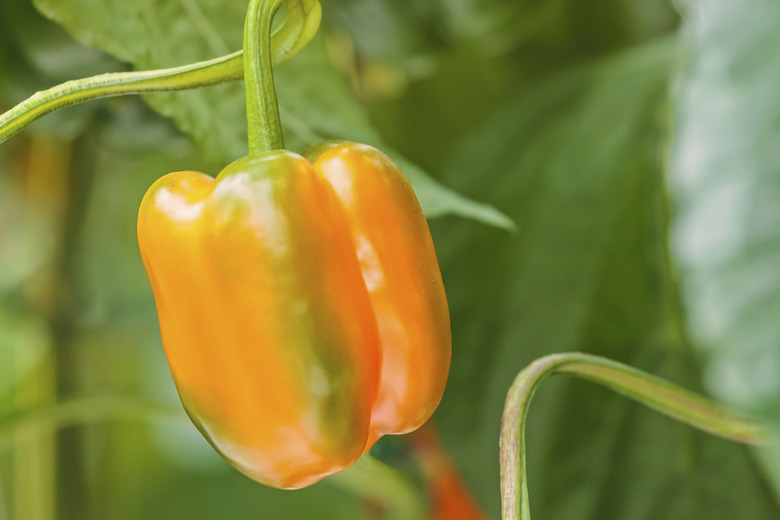The Life Cycle Of The Pepper Plant
We may receive a commission on purchases made from links.
Understanding the life cycle of the pepper plant helps you support its growth in your vegetable garden. Peppers are members of the Capsicum genus, which is part of the Solanaceae or nightshade family. Although peppers are grown in most gardens as annuals, they're perennials in the warmest climates. Domesticated peppers are typically members of one of five species: annuum (USDA hardiness zones 11-12), baccatum (zones 8-11), chinense (zones 10-11), frutescens (zones 9-11) or pubescens (zones 8-11), ranging in heat from mild to dangerously hot. Some hot peppers, like the ghost pepper and the 'Naga Morich,' have tested at more than 1 million Scoville Heat Units. All Capsicum plants share the same life cycle: germination, growth, pollination, fruiting and ripening.
The Seeds Germinate
The Seeds Germinate
The first step in the life cycle of the pepper plant is seed germination. Peppers are tropical plants, which means they germinate best in warm soil temperatures. Temperatures between 75 and 85 degrees Fahrenheit work well with the optimal temperature being 85 degrees.
The seeds need to be covered with about 1/4 inch of moist soil. Even the healthiest pepper seeds germinate slowly. Though some seeds will come up in a week or 10 days, others can take as long as four to six weeks to germinate. When they come up, they'll have two long, pointed leaves.
The Plant Grows
The Plant Grows
Because peppers germinate so slowly, gardeners in cooler climates typically plant their seeds indoors in pots or starter trays to kick start the life cycle of the pepper plant. At six weeks after emergence, the root system will be large enough that the pepper seedlings will need a pot at least 4 inches across. At eight weeks, the plant will have several leaves and can be transplanted to the garden.
Peppers need warm weather to prosper and shouldn't be put outside until at least two weeks after your average last frost date. If you're having a cool spring, keep them inside until the daytime temperatures get at least into the 60s.
The Flowers Are Pollinated
The Flowers Are Pollinated
For the life cycle of the pepper plant to continue, it needs to be pollinated. Some peppers self-pollinate while others cross-pollinate. Peppers can self-pollinate by dropping pollen directly from the anthers to the stigma. However, when insects visit the flowers, they can cross-pollinate the flowers, taking pollen from one flower and moving it to another flower.
The Plant Sets Fruit
The Plant Sets Fruit
When the ovary of the flower is fertilized, the pepper plant sets fruit. The ovary grows into a fleshy pericarp that encloses two or more locular cavities. The pericarp of the pepper is the edible walls of the ovary. The pericarp grows and thickens to form the pepper. The locular cavities are the hollow chambers inside the pepper in which the seeds form.
The Fruit Ripens
The Fruit Ripens
Once the fruit has grown to its mature size, it begins to ripen. Immature peppers are almost always green. As the fruit matures, the seeds mature, and the sugars and flavor compounds accumulate in the flesh of the pepper.
The chlorophyll in the pepper also breaks down, causing the pepper to change from green to its mature color, which can be anything from red (the most common color) to yellow, orange, purple, or even variegated. If the pepper is an open-pollinated type, the ripe seeds can be sown to produce the next generation of peppers.
Sweet peppers typically take 60 to 90 days to mature. Hot peppers vary, with some types taking up to 150 days to mature. This range starts when you transplant the seedling. Growing the pepper plant from seed adds another eight to 10 weeks.
